Exploring a Silver Age staple…
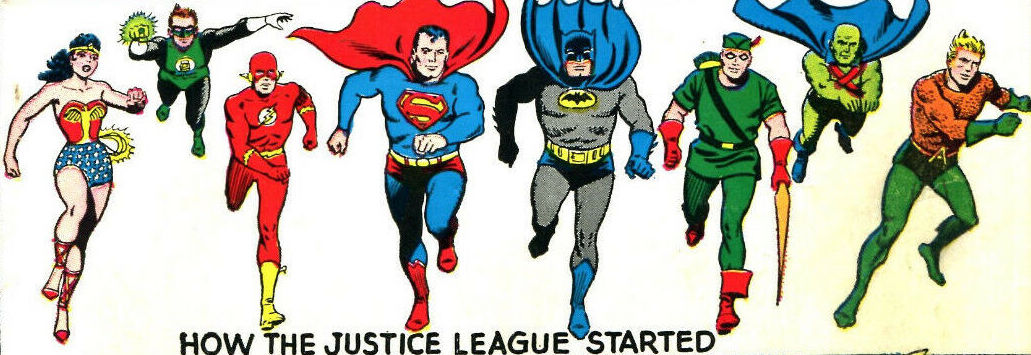
—
UPDATED 10/22/23: Like I said recently, one of my fave things to do is go back into the 13th Dimension vaults and find random stories that I dig so much, I want to “reprint” them, as they say. Here’s one from columnist Paul Kupperberg that first ran in October 2020, just as Paul was becoming a regular here. Dig it! — Dan
—
Y’know how some people just have comic book ink coming out of their pores? Writer Paul Kupperberg is one of those guys. Dude loves comics and has managed to make a decades-long career of it, primarily at DC and Charlton.
His upcoming memoir/writer’s guide I Never Write for the Money… But I Always Turn in the Manuscript for a Check has already been funded on Kickstarter, and I’m glad to welcome him back for his third guest appearance here at 13th Dimension in the last three weeks.
This time out, Paul’s looking at the comics that had the biggest impact on him growing up in the ’60s — the ever-popular DC 80-Page Giants.
Dig this.
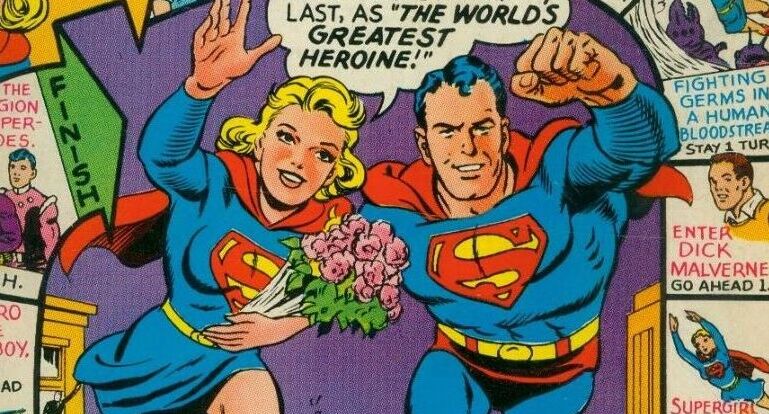
—
By PAUL KUPPERBERG
The best comic books ever were DC’s 80-Page Giants, 78 issues published between Superman Annual #1 (1960) and 80-Page Giant G58 Our Army at War #203. When they started, the standard comic book was 32 pages (usually 24 pages of story and eight of editorial and ads) for 10 cents; the 80-Page Giants were great big, chunky square-bound 80 (duh!) pages of story and art, no ads (except for half-page filler ads) for 25 cents, giving readers more than three times the stories for two-and-one-half times the price.
80-Page Giants came along at the perfect time for me as a 5-year-old reader in 1960. It didn’t matter that those pages were reprints, most usually five or so years old themselves. They were as new to me as any story published that same month, and often by the same writers and artists doing the current issues. 80-pagers were my introduction and guides to recent comics history.
Here are the 13 best of the best comic books ever.
Numbering note: The first 15 were numbered individually, as Superman Annual # 1-3, Batman Annual #1-2, etc. Beginning with 1965’s 80-Page Giant G16 Justice League of America #39, the format was still used for annuals and specials but was put on a dual numbering system, which was maintained even after the page count was reduced to 64, beginning with 1969’s DC Giant G57 Action Comics #373, and lasting until DC Giant G89 Justice League of America #93 in 1971.
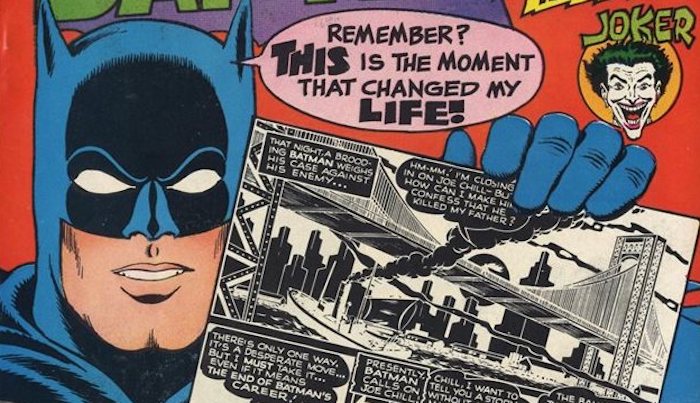
—
1. Secret Origins #1 (Summer 1961): Head… blown! I didn’t discover this 80-page gem of a comic book until 1964, not long after reading Detective Comics #324 (February 1964), my introduction to the back-up feature character, Manhunter from Mars. As much as I loved the Man of Steel, the fact that Manhunter, who had all the same powers as Superman plus invisibility plus shapeshifting plus intangibility, intrigued the hell out of me and here, just one of eight amazing stories was his origin. His secret origin in “The Strange Experiment of Dr. Erdel” by Joe Samachson and Joe Cert. It also introduced me to Adam Strange, from his Showcase #17 origin by Gardner Fox and Mike Sekowsky, and was the first comic that got me curious about the histories and backgrounds of these characters.
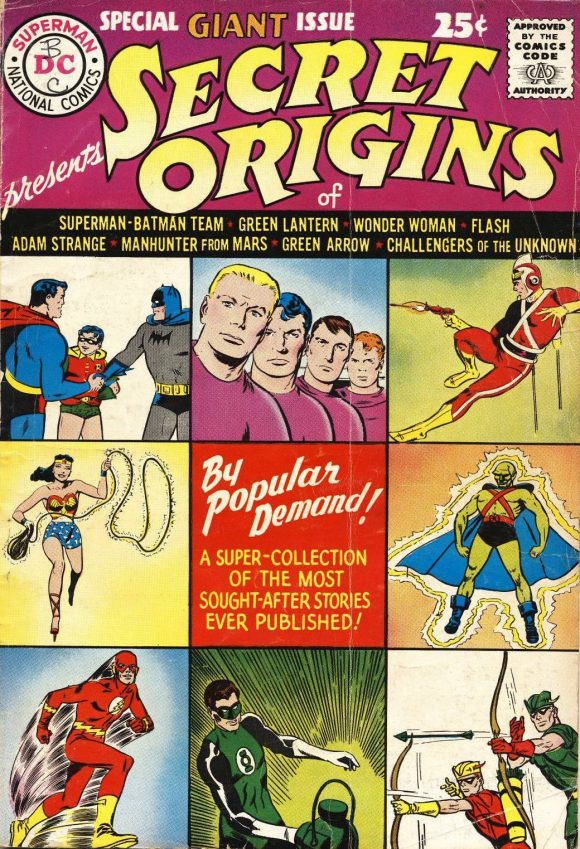
—
2. Flash Annual #1 (G9, Summer 1963): Featuring “Famous Flash Firsts,” my copy of this issue still has sand from New York’s Coney Island and Riis Park beaches ground into the spine from my continuous rereading of it that summer. And, except for a 1947 (Golden Age!) story — “The Amazing Star Sapphire” by artist Lee Elias — the rest of the reprints were by Carmine Infantino, my then favorite artist, and the first whose work I learned to recognize from his style alone. It holds up today as a great collection of Flash stories (including the astonishing “A Complete Checklist of All the Flash Stories Published to Date,” and a Flash cover gallery), but the stand-out feature was the brand-new, two-page illustrated spread, Carmine Infantino’s “How I Draw the Flash.” I wasn’t an artist, but this made me want to be one.
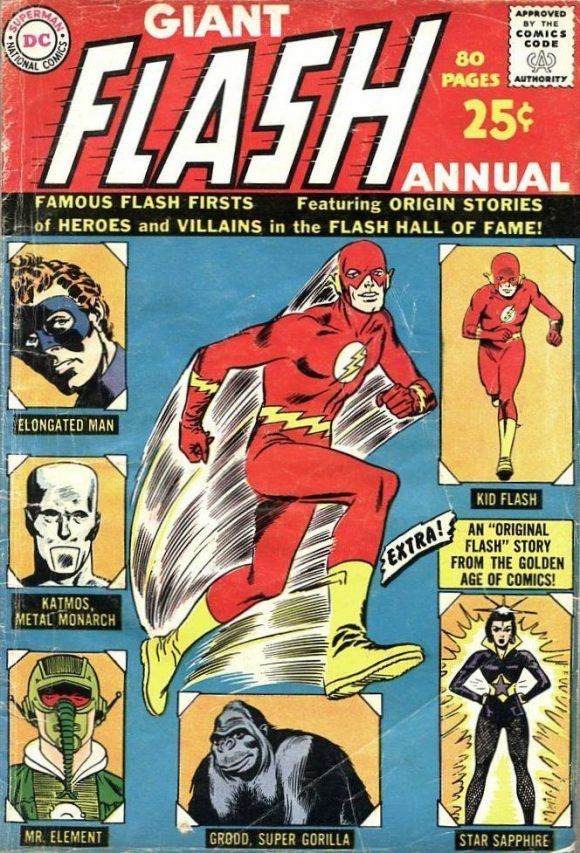
—
3. Superman Annual #1 (Summer 1960): The first superhero’s famous firsts were on display in the first 80-Page Giant, including his first super-feat, his first meeting with Jimmy Olsen, his first encounter with Lori Lemaris, the introduction of Supergirl, and several other tales, as well as a map of Superman’s lost home world, Krypton. Interesting to note when reviewing the contents of this issue that the majority of the reprints were less than three years old, but, once again, they were new to me when I finally found this issue in the mid-’60s, as they were likely new to the readers who bought it when it came out. Superman Annual #1’s longest lasting effect was to lead me to collect Action Comics for the ongoing Supergirl back-up feature.
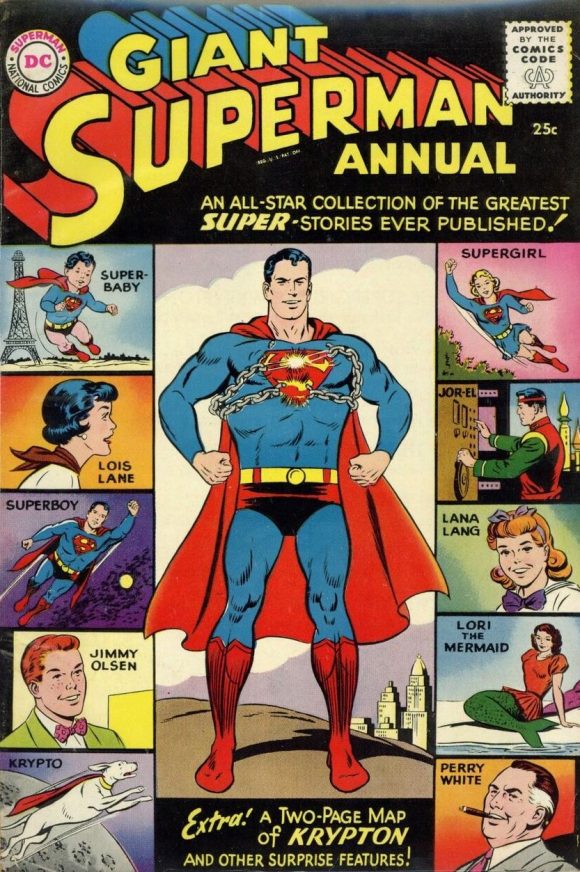
—
4. Rudolph the Red-Nosed Reindeer Giant Annual #13 (December 1962): Apparently, DC didn’t let poor Rudolph play in their 80-Page Giant numbering game and, just to further confuse things, Rudolph the Red-Nosed Reindeer Giant Annual #13 was the title’s 13th annual issue but the first (and only) 80-Page Giant issue, the previous dozen (from which this giant’s contents were pulled) having been published annually as regular 32-page 10-cent comics since 1950. This was the first 80-Page Giant I ever bought new off the stands, in the winter of 1961, and I was still carrying it around in the summer of 1962, where I lost it somewhere in Grafton, West Virginia. The stories are credited mostly (and provisionally) to Sy Reit (with Bob Oksner credited as writer of several later stories) and the art to Rube Grossman, but kiddie kudos to whoever served up these charming (and nondenominational) stories.
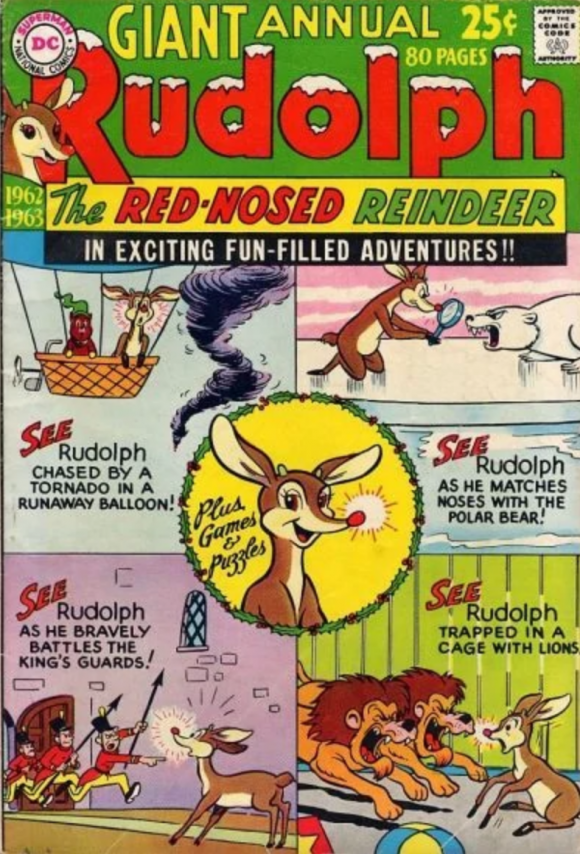
—
5. 80-Page Giant #8: More Secret Origins (March 1965): It only took DC four years to follow up the Secret Origins Giant with More Secret Origins. While this second collection didn’t have the same impact on me as the first, it was still an important link in my development as a comic book reader and budding historian. Of course, the issue had me at “How the Justice League Started!” One of my favorite titles, I’d never read the story from 1960’s JLA #9 that told how they all met. I also learned the origins of the Atom, Aquaman, and Robin, and gained some further insights into the early lives of Superman and the Flash. I wasn’t paying attention to the credits quite yet, but it wouldn’t be long before I started to put the name Julius Schwartz from the masthead here (shared with Jack Schiff) with most of my favorite DC titles.
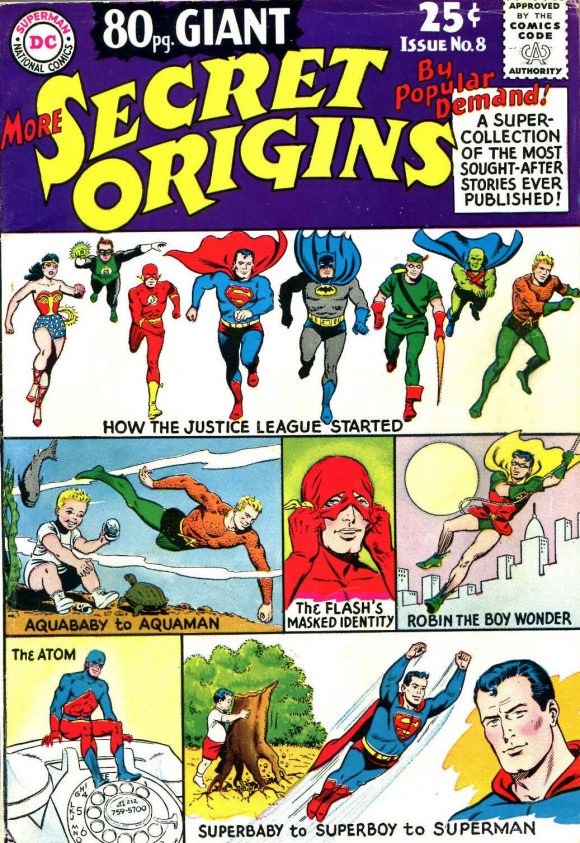
—
6. Batman Annual #5 (Summer 1963): Yes, I know this isn’t Batman. But it was Batman, for much of the 1950s and well into the 1960s, until the introduction of the “New Look” Batman under Julius Schwartz (that name again!) in 1964. The Dark Knight had somehow morphed into a semi-science-fiction strip, fighting aliens and laboratory creations run amok. I guess editor Jack Schiff was following the 1950s science fiction craze, and it must have worked; the cover of Batman Annual #5 shows you exactly why an eight-year-old reader of the time would jump at it. Giant Batman! Merman Batman! Zebra Batman! Doomed Batman! Grown-up Robin! Holy irresistible, Batman!

—
7. Superman Annual #8 (Winter 1963): Two things stand out about this “Super-Collection of Untold Stories and Secret Origins” for me. First, it was my introduction to “When Lois First Suspected Clark Was Superman!” an eight-pager by Jerry Siegel and Al Plastino that contains what is perhaps my favorite single page ever published in a comic book, featuring Clark Kent and his foam rubber arm.
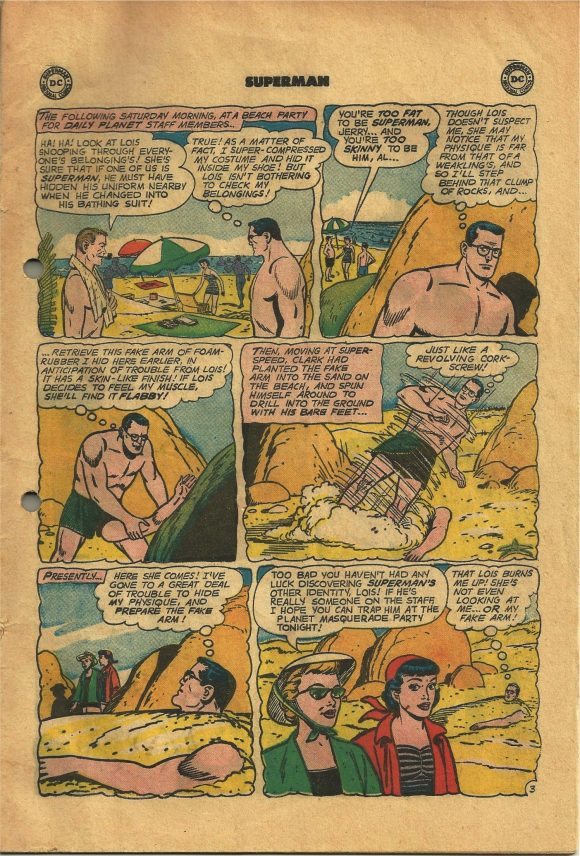
Second, this was the comic book I read over and over again the weekend John F. Kennedy was assassinated. Superman was already my go-to comfort hero, so I was happy to have these strange tales of my favorite hero to distract me from the sadness of that weekend.
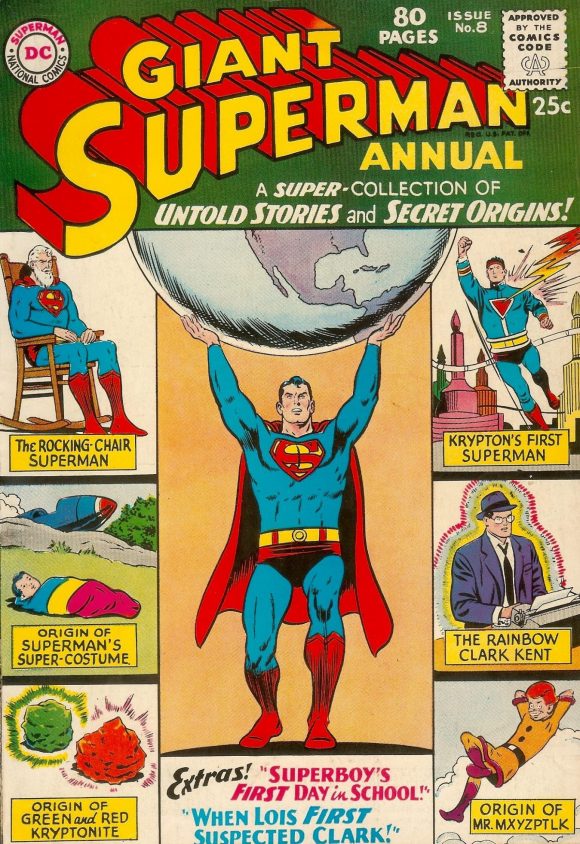
—
8. 80-Page Giant #1: Superman Annual (August 1964): I forget if it was when I had the measles or the mumps or chicken pox or German measles, but my father brought me home this beauty during my recuperation. This Giant, “Featuring Superman’s Most Fabulous Imaginary Adventures” broke all the rules I knew about Superman and offered alternate, “what if?” takes on the Man of Steel. What if baby Kal-El had been found by a mobster and raised to be a super-criminal? What if he somehow got old and lost his powers? Or failed to save the world? Or any number of “might be” scenarios. Superman editor Mort Weisinger at his best, expanding the mythos into ever newer worlds.
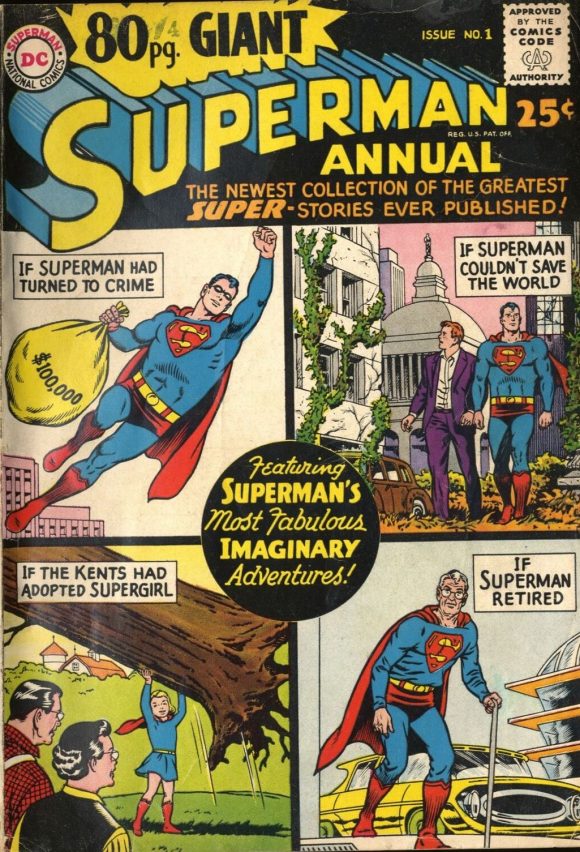
—
9. Action Comics #360 (G45, March-April 1968): In that prescient way kids have, I knew that a mere 16 years or so later I would become the regular writer for close to three years of the Supergirl character. No, I didn’t. But I did love her strip in the back of Action Comics and, even though I owned many of the issues it reprinted, this 1968 collection of the stories by Jerry Siegel and Jim Mooney leading up to and including her big reveal to the world after years of serving as Superman’s “secret weapon” made it a whole different experience than reading the individual issue. It was just as the cover promised, “A Comic First! A Complete Book-Length Novel!” A complete 80-page novel! My first graphic novel? Great Krypton!
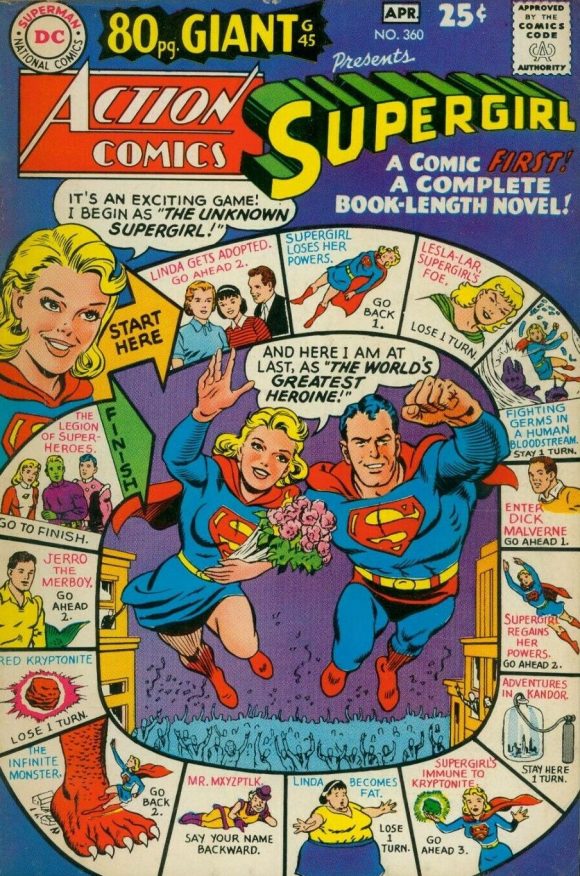
—
10. 80-Page Giant #7: Sgt. Rock’s Prize Battle Tales (February 1965): For my money, the best character-driven war comic was Sgt. Rock. The strip by Robert Kanigher and Joe Kubert didn’t play superhero-in-khakis like Marvel’s Sgt. Fury; they were down and dirty war stories and memorable mortality tales, drawn by one of the best artists ever to pick up a pencil. I was still superhero-centric but I was starting to pick up titles in other genres (humor, horror, Western) and this is my earliest memory of Rock and the Combat Happy Joes of Easy Co. The War That Time Forgot’s “Mission X!”, where the heroes escape an island full of giant animals in a giant turtle eggshell didn’t hurt. Neither did the double-page spread by Kubert of “DC’s Blazing Gallery of Battle Stars!” including Rock, Lt. Jeb Stuart, Gunner, Sarge, Pooch, Capt. Johnny Cloud and Captain Storm, which sent me scurrying off looking for their comics.
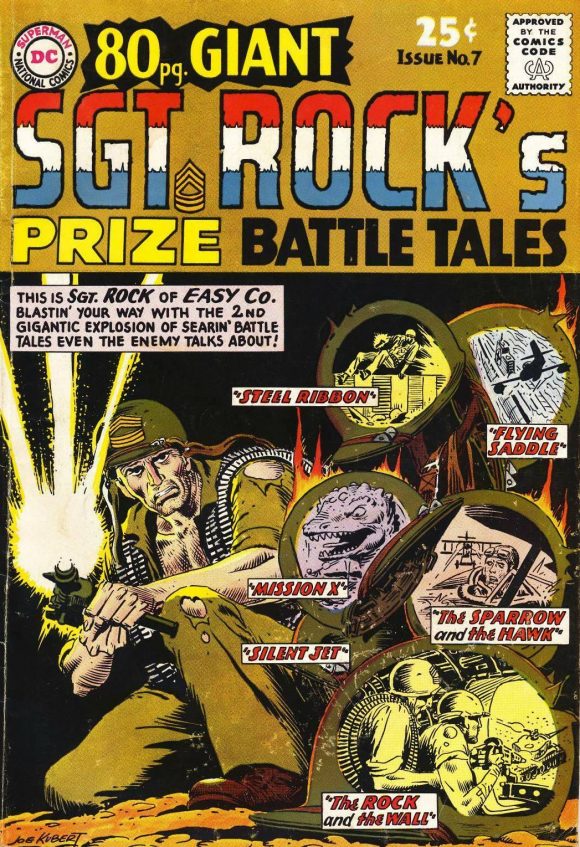
—
11. Superman Annual #7 (Summer 1963): The cover alone, featuring that iconic silver statue of Superman by Curt Swan celebrating Superman’s “Silver Anniversary Issue!” and “Featuring the Greatest Superman Stories Published in the Past 25 Years!” made this a favorite at first sight. I suppose you could debate if these actually were the greatest of his stories, but they were pretty darn good, even down to the silly “Superman in the White House,” a 1958 story by Otto Binder and Al Plastino where Jimmy gets knocked out and dreams that Superman is elected President of the U.S.A. (Spoiler: As an alien, Superman’s not eligible to serve in the office!) On the other hand, it also featured a cover gallery of “Famous First Issues!” (Superboy #1, Superman #1, Superman’s Pal Jimmy Olsen #1 and Superman’s Girlfriend, Lois Lane #1), as well as a small bit of continuity from the 1950s Superman newspaper strip, a rare glimpse at another version of the Man of Steel.
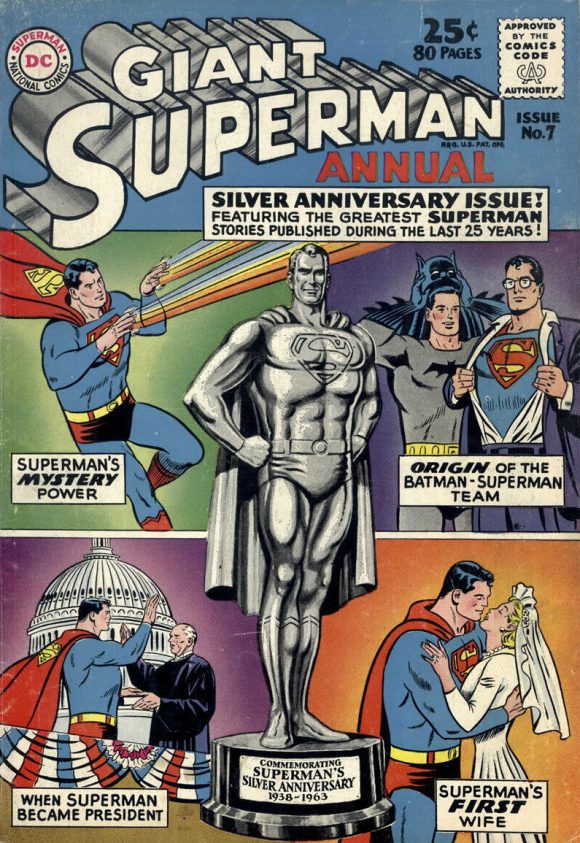
—
12. 80-Page Giant #9: The Flash (April 1965): The lead reprint in this comic book was the story that pushed me over the edge from engaged reader to hardcore fan: “The Flash of Two Worlds” by Gardner Fox, Carmine Infantino and Joe Giella from 1961’s The Flash #123. In it, the Silver Age Barry Allen Flash crosses the vibrational barrier between worlds to meet his Golden Age predecessor, the Jay Garrick Flash. We would gradually learn the true ramifications of the meeting itself in years to come, but the immediate impact on me was the date on a newspaper that Flash looked at to learn he was in Keystone City: June 14, 1961. My birthday! I know it was just a coincidence but it resonated with me and when the ramifications did become known, I was proud that the Multiverse had been discovered on my birthday.
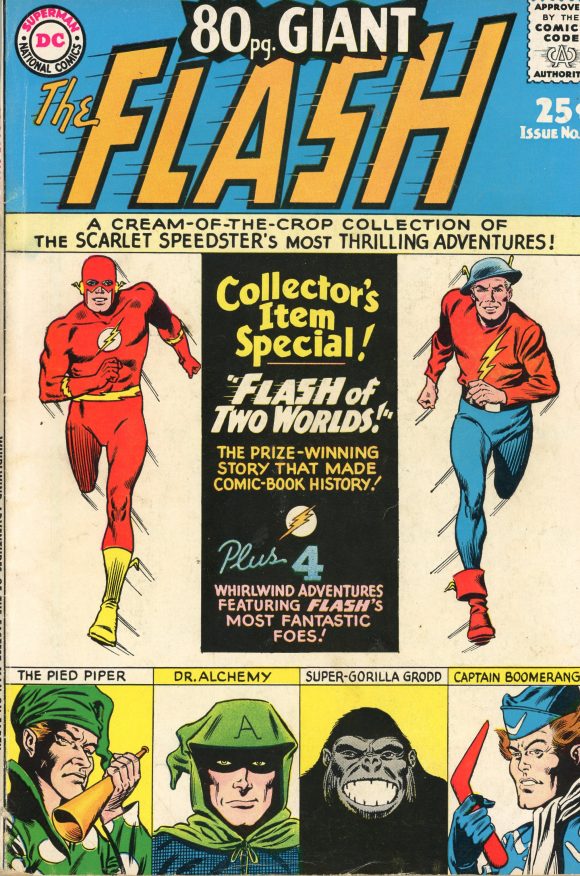
—
13. Batman #198 (G43, January-February 1968): Batman may have been in the fourth year of his “New Look,” but the reprints in this “Special All-Villain Issue” were still from the Jack Schiff era. But not the silly sci-fi stories! Here we got the detective Batman versus Joker, Penguin, Catwoman and some of the lesser known members of the Dynamic Duo’s Rogues Gallery. The stand-out story was the lead “The Origin of the Batman” by Bill Finger, Bob Kane, and Charles Paris from Batman #47 in 1948. This story expanded on the origin from Detective Comics #27, which ended with the traumatized boy Bruce Wayne growing into the traumatized adult Batman. This story took it further, as, years after the murder of his parents, the thug who pulled the trigger was at last named (Joe Chill) and Bruce/Batman was allowed to confront him. It didn’t end well for Joe.
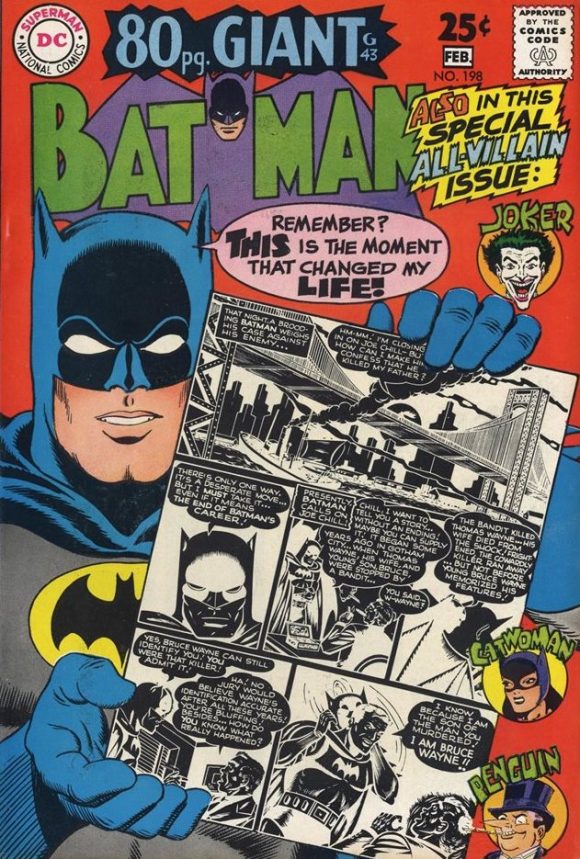
—
By the way, in a case of life coming full circle, in 1998, as a DC Comics editor, I was assigned to edit two latter-day 80-Page Giants, Adventure Comics 80-Page Giant #1 and The Flash 80-Page Giant #1, both with all-new material and cover-dated October 1998. The following year, when DC started publishing a series of replicas of the original 80-pagers and, later, 100-pagers, I wrote the little explanatory/historic blurbs for the inside covers. — Paul
—
MORE
— PAUL KUPPERBERG: My 13 Favorite Comic Book Stories I’ve Written. Click here.
— RETRO HOT PICKS! On Sale This Week — in 1975! Click here.

October 10, 2020
God bless Mr. Kupperberg for playing a part in the comics industry.
October 10, 2020
Back in my collecting days, I would actively seek out the Batman 80 Page Giant issues. They were a great source for reprints and were usually cheaper than the regular issues because they didn’t feature Neal Adams covers.
October 15, 2020
They were a great bargain to get so many pages for 25 cents! I never missed a Batman 80 pager! Thanks for the memories Paul!
October 10, 2020
This page on the internet makes me happy. Thank you.
October 11, 2020
Numbering note: The first 15 were numbered individually, as Superman Annual # 1-3, Batman Annual #1-2, etc. Beginning with 1965’s 80-Page Giant G16 Justice League of America #39,
Slight mistake, the annuals were numbered individually.
The first 15 were numbered G-1 to G15, they then incorporated G-16 up as part of the normal numbering
October 11, 2020
80-Page Giant #1: Superman Annual (August 1964 was G-1 but was supposed to be Superman Annual 9, you can see the “80 Page Giant ” blurb blends in with the original logo saying Giant
October 14, 2020
Simply wonderful, classic comics! All these books put a smile on my face.
October 15, 2020
I desperately Wanted More Secret Origins and the Superman Silver Anniversary Giants. What could Supermans unknown power be? Inquiring minds needed to know!
March 17, 2022
When they folded the numbering for the 80-Page Giants into the numbering for regular series (see Batman #198 above), they apparently had a regular-sized issue coming out with the same cover date, #197 or #199. I’d have thought the idea of the Giants and Annuals would be to NOT have a cover month, so newsstands might leave them out a little longer.
October 22, 2023
Who else wishes DC would sell a facsimile of that silver Superman statue?
October 22, 2023
Thank you for this, Paul! I haunted a used store with my allowance as a kid and I didn’t see any of these but I saw the ads in 60s DC back-issues I got! I’ve read a lot of these stories (which were reprinted AGAIN!) but I don’t know that I even actually saw any of the actual 80-Pagers until decades later. I agree with you about the excellence of the Batman Joe Chill story but I’ve never read the “When Lois First Suspected Clark” yarn. Again, thanks so much!
October 22, 2023
And all these…Decades…later…I still have my 2 boxes of DC Silver Age Comics, including the Superman Silver Anniversary and Batman 198!!
October 23, 2023
Squarebound Silver Age is my favorite genre of comics.Have all of these and more. This was the way to read comics not available to a Silver Age kid.
August 4, 2024
Thank you! The first World’s Finest I ever read was WF#170 (G40). And the first Batman I ever read was #182 (G24). And to reveal a “dirty little secret” to this day my all time favorite Batman story is The Rainbow Batman!